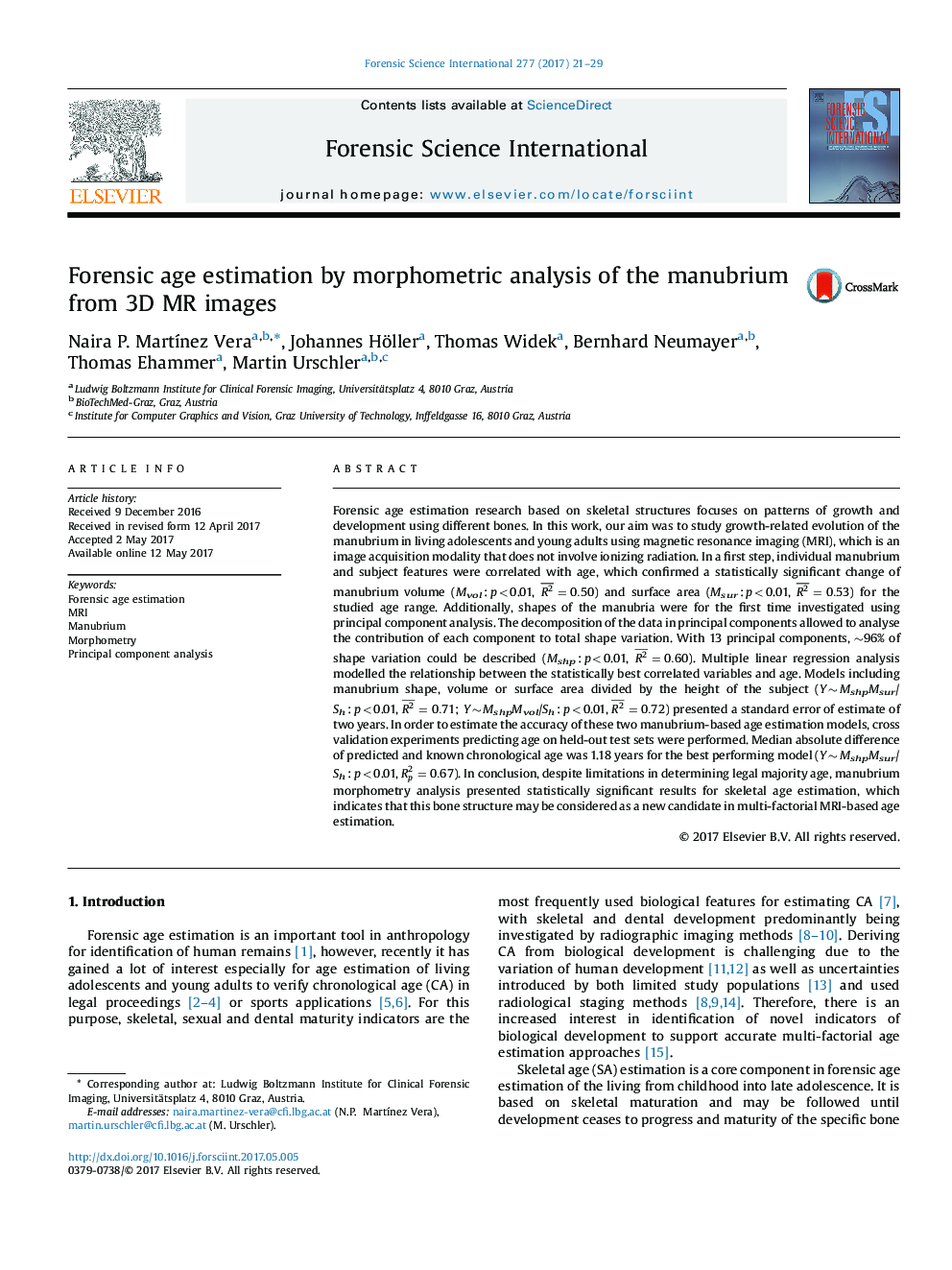| Article ID | Journal | Published Year | Pages | File Type |
|---|---|---|---|---|
| 4760248 | Forensic Science International | 2017 | 9 Pages |
â¢Examination of the use of morphometric changes in the manubrium for forensic age estimation.â¢Statistical evaluation of a PCA based model to predict age in adolescents.â¢Results on N = 130 male subjects confirm feasibility of age estimation with a prediction error of two years.
Forensic age estimation research based on skeletal structures focuses on patterns of growth and development using different bones. In this work, our aim was to study growth-related evolution of the manubrium in living adolescents and young adults using magnetic resonance imaging (MRI), which is an image acquisition modality that does not involve ionizing radiation. In a first step, individual manubrium and subject features were correlated with age, which confirmed a statistically significant change of manubrium volume (Mvol : p < 0.01, R2¯=0.50) and surface area (Msur : p < 0.01, R2¯=0.53) for the studied age range. Additionally, shapes of the manubria were for the first time investigated using principal component analysis. The decomposition of the data in principal components allowed to analyse the contribution of each component to total shape variation. With 13 principal components, â¼96% of shape variation could be described (Mshp : p < 0.01, R2¯=0.60). Multiple linear regression analysis modelled the relationship between the statistically best correlated variables and age. Models including manubrium shape, volume or surface area divided by the height of the subject (Y â¼Â MshpMsur/Sh : p < 0.01, R2¯=0.71; Y â¼Â MshpMvol/Sh : p < 0.01, R2¯=0.72) presented a standard error of estimate of two years. In order to estimate the accuracy of these two manubrium-based age estimation models, cross validation experiments predicting age on held-out test sets were performed. Median absolute difference of predicted and known chronological age was 1.18 years for the best performing model (Y â¼Â MshpMsur/Sh : p < 0.01, Rp2=0.67). In conclusion, despite limitations in determining legal majority age, manubrium morphometry analysis presented statistically significant results for skeletal age estimation, which indicates that this bone structure may be considered as a new candidate in multi-factorial MRI-based age estimation.
